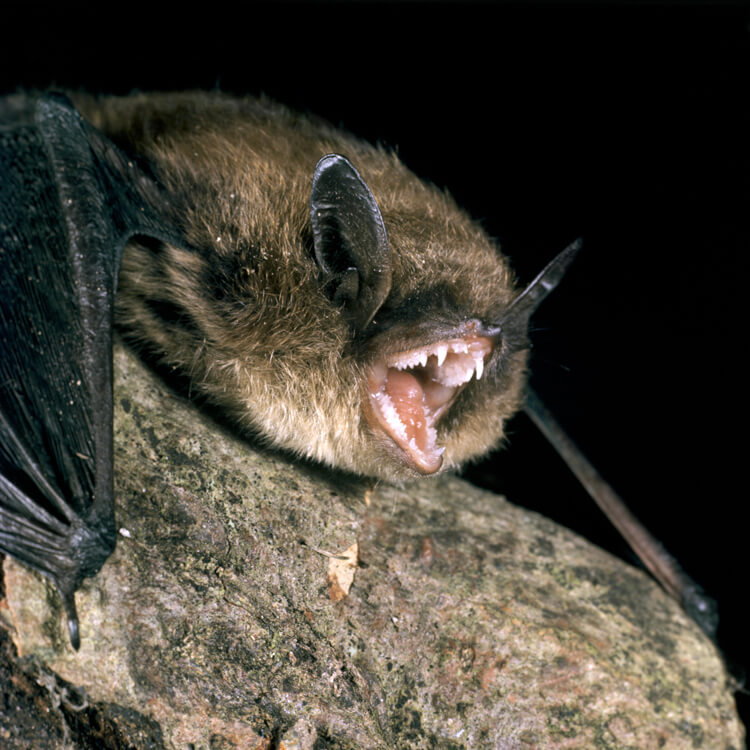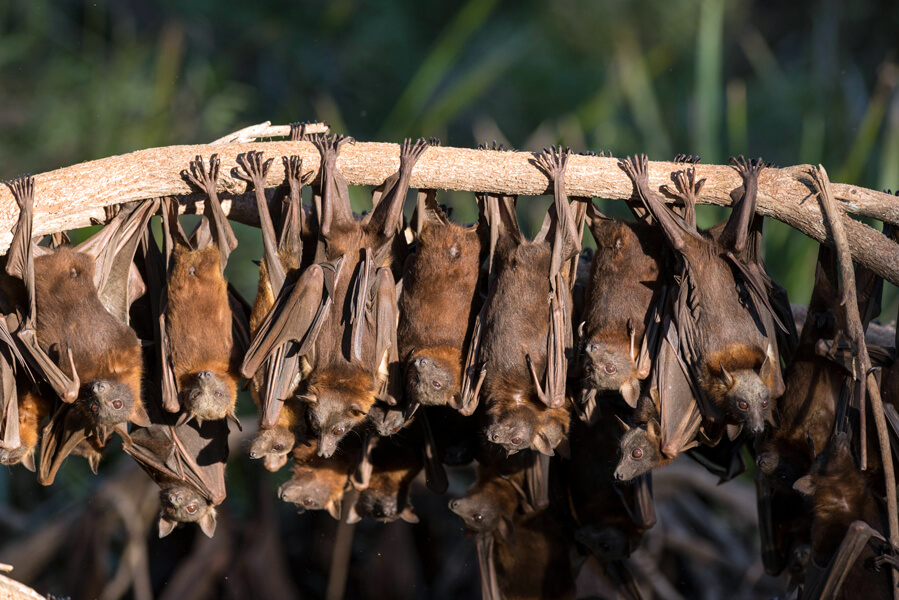Most of us think of bats only when it’s time to decorate for Halloween. But a large group of scientists finds them fascinating all year round — so much so that they’ve launched an ambitious research program, known as the Bat1K Project, to sequence the genomes of every one of the world's 1,300-odd bat species. And the payoffs could be surprisingly high.
Why bats, of all groups to choose for such an effort? Emma Teeling, the project’s cofounder, is glad you asked. “I’ve been studying bats for over 20 years, and they’re the most extraordinary of all mammals,” says the evolutionary biologist from Ireland’s University College Dublin.
To take the obvious point first, bats can fly — the only mammals to do so, and one of only three flying animal groups alive today. (The extinct pterosaurs are the only other animals beyond birds, insects and bats to evolve flight.) Flight has shaped the evolution of bats in countless ways, from their small size and light weight, to their high energy output and their unusual echolocation abilities. “It pushed them to the edge of what I like to call mammalness,” says Rick Adams, a bat biologist at the University of Northern Colorado in Greeley and chair of policy and public relations for the North American Society for Bat Research. Having a complete set of bat genomes will allow biologists to work back up the evolutionary tree to see how bats evolved flight and how they differ from birds in solving its challenges.
But bats hold some secrets that medical science covets, too, most notably about longevity. In general, smaller mammals live briefer lives than large ones — but some bats live 10 times longer than expected, given their body size. That’s especially surprising given bats’ high metabolic rate that, in flight, can be 30 times higher than any other mammal. The long-life record holder so far is a wild Brandt’s bat, one-third the size of a mouse, that was captured and marked in Siberia in the early 1960s then caught again 41 years later. (Mice live two to three years in captivity and far less in the wild.)

Bats live a long time for their size. Shown here is the tiny Brandt’s bat (Myotis brandtii). One wild-living bat of this species was tagged in the early 1960s and re-caught 41 years later.
CREDIT: NATURE PHOTOGRAPHERS LTD / ALAMY STOCK PHOTO
Teeling’s bat research has focused on telomeres, caps at end of chromosomes that wear down over repeated cell divisions until they’re so short that cells stop dividing. Cells have telomerase, an enzyme that can restore telomere length and thus prevent the cells from growing old. But this cuts both ways: Cancer cells use telomerase to immortalize themselves, allowing tumors to grow unchecked. At least some bat species have long telomeres, Teeling has found — but they don’t use telomerase to do it (and also have almost no cancer). Instead, other genes are involved in maintaining bat telomeres. Knowing more about this may yield payoffs for human longevity.
And Teeling’s “Why bats?” list continues: Bats have complex social lives, complete with friendships, food-sharing and sophisticated vocal communication. They pollinate many tropical plants and disperse their seeds, and they eat mosquitoes and other insect pests. They also have virtuoso immune systems, capable of amping up to control lethal viruses like rabies, Marburg and Nipah and shutting back down quickly, thus avoiding the chronic inflammation that is a common contributor to diseases of aging. Bats’ potent immune systems may help explain why they are suspected to serve as reservoirs of some deadly viruses.

Little red flying foxes (Pteropus scapulatus) roost on a tree limb in Australia.
CREDIT: JUERGEN FREUND / ALAMY STOCK PHOTO
The Bat1K Project is a consortium that now numbers more than 200 researchers, conservationists and bat enthusiasts. Their aim is to produce high-quality genome sequences in three phases: First, the team will sequence a genome from each of the 21 major groups, or families, of bats. Next, they’ll sequence one from each bat genus (there are 220 in total) — they’ll polish off the rest in the third phase. The consortium already has funding for Phase 1, and Teeling hopes to have 80 percent of the first-phase sequencing done by the end of 2019, with analyses taking another year or two after that.
Once results start coming, researchers will be able to work out the family tree of bats in unprecedented detail. Indeed, Bat1K’s exquisitely precise genomes should be a big help in finally resolving the still-open question of where bats came from: Bats belong with shrews, whales and hoofed mammals, but that group evolved so quickly that researchers haven’t been able to sort out the relationships yet. A comprehensive set of genomes will also help conservation biologists rapidly assess the genetic diversity of endangered bat species, so that they can focus their efforts where they are most needed.
And when all the DNA data are finally in the bag, researchers expect to find other, unexpected ways to put them to use. “Having these genomes,” says Teeling, “is the starting point for so much more biology.”




